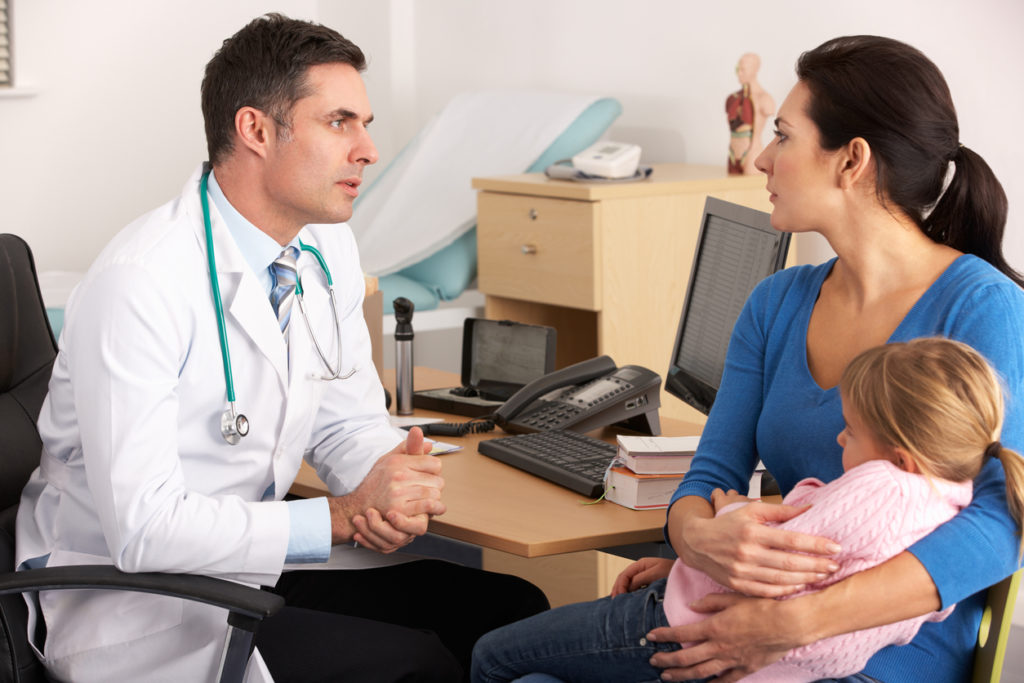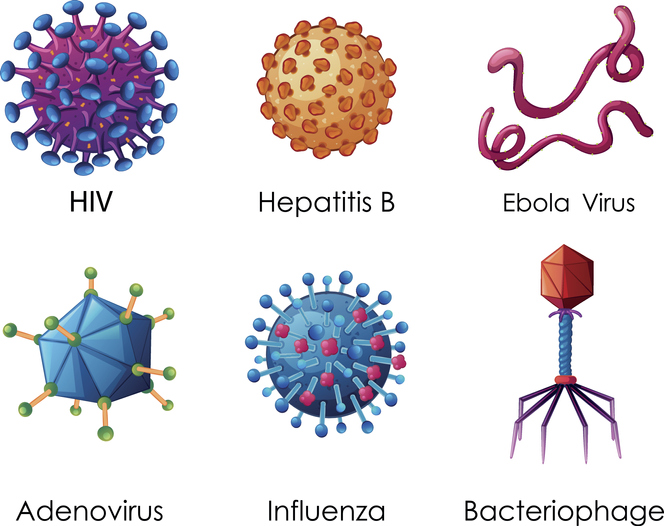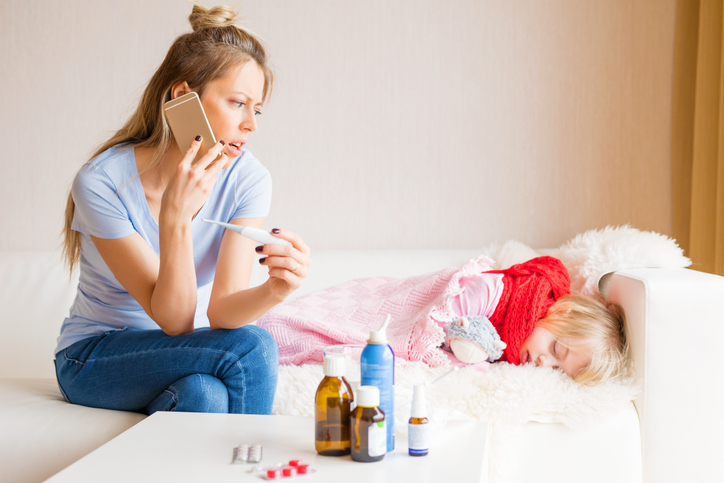
When you have a sore throat, a runny nose, or a chill… You might have caught a cold.
I was so surprised when I started my own medical practice in April 2000 and found that there were so many people who visited my clinic for a cold. Their complaints were usually that of having a “sore throat, cough, fever or phlegm.”
I, as a doctor, of course begin with physical examinations so that I can get to the root cause, help them feel better and write a prescription where necessary. In many cases, however, “those visits seem to be unnecessary” to me – and sometimes I wonder if they might catch another illness or germ by visiting a clinic.
They probably believe that prescription medicines work more effectively than OTC (over the counter) drugs. They might also feel more relieved when they get a diagnosis with a common cold by eliminating possibilities of other more serious illnesses by having a physical examination done at an early stage.
To get straight to the point, there is no effective curative medication to a common cold at this point in time. The cold medicines of any kind, regardless of prescribed or OTC, only “alleviate those terrible symptoms that they suffer right now”.
Especially for patients with cognitive dementia, prescribing multi-symptom cold medicines should be avoided.
I will provide you some useful information and natural remedies to treat a common cold so that it can save you some money without making unnecessary trips to the clinic.
Note: See your doctor if you have a sudden fever when the flu is going around (wait at least 6 hours after you get a fever). Remember to wear a mask to prevent infection to other people.
Contents
- 1.Common cold: caused by a virus to which antibiotics are ineffective.
- 2.Why do cold symptoms appear?
- 3.Remedies for a cold
- 3-1.Sufficient nutrition and rest are needed for a typical viral cold
- 3-2.Use of antibiotics from the clinic for colds caused by bacterial infection
- 3-3.Use of antiviral medications for influenza. A person with the flu should be isolated in the house
- 3-4.Shots are ineffective for a cold
- 3-5.Pay close attention when multi-symptom cold medicines are provided to a person with dementia
- 4.Home remedies suggested by Dr. Hasegawa
- 5. When to see a doctor
- 6.Treatment of a cold in the future in Japan
- 7.Summary
1.Common cold: caused by a virus to which antibiotics are ineffective.
Most common colds are caused by a “viral infection of upper respiratory tract which causes an acute inflammation.” It can be said that colds are generally curable just by getting rid of those viruses. However, current cold medicines cannot get rid of the viruses.
1-1.Antibiotics only work on bacterial infection
People might say that “there are antibiotics from medical institutions which can be prescribed. Why don’t you prescribe us antibiotic agents?” Unfortunately, antibiotics are only effective against bacterial infection.
Only 10% to 20% of outpatients with cold-like symptoms actually have bacterial infections. This means that 80% to 90% of outpatients may actually suffer from viral infections to which antibiotics are not effective.
1-2.Symptoms suspected of bacterial diseases
Generally, it is unnecessary to see a doctor for a cold. However, your symptoms warrant a visit for further evaluation if you suffer from symptoms indicated below.
- Painful sore throat. Appearances of “milk crumbs” in the back of your throat with aid of a mirror (you might have developed pus)
- Fever over 39 degrees lasting longer than 3 days
- Red spots on your tongue
- Continuous ups and downs of fever between 38 to 39 degrees and around 37 degrees
- Pain in the ears accompanied by hypacusis
- Persistent cough after experiencing cold-like symptoms (fever, runny nose, headache)
If you have none of the symptoms described above, it’s highly likely that you may have caught a “common cold.”
[Difference between virus and bacteria]
| Bacterium | Virus | |
|---|---|---|
| Size | 1/100〜1/1000mm | 1/10 – 1/100 of bacterium |
| Structure | Single-celled | Genes and capsid protein |
| Growth | Single-celled | Infest and take in nutrients |
| Antibiotics | Effective | Ineffective |
| Typical examples | E coli, dysentery bacillus, cholera germ, salmonella | Influenza virus, adenovirus, norovirus, hepatitis virus, HIV virus |

bacteria

Six types of viruses
2.Why do cold symptoms appear?
There are many types of cold symptoms. Most of them occur when our body tries to cure themselves through our natural process of healing.
2-1.Fever
The rise in body temperature usually helps to kill viruses. Basically, it is not necessary to bring down a fever.
2-2.Sneezing and runny nose
Sneezing and runny nose help expelling mucus fluid from the nasal cavity. Medications are usually not necessary. In general, blowing your nose can get rid of the mucus fluid.
2-3.Sore throat
Inflammation occurs in the throat to combat viruses through our natural process of healing. It may take longer to cure if you take antipyretic analgesics. However, you should see a doctor when pus has developed in the pharynx since it is suspected to be of bacterial infection.
2-4.Cough and phlegm
Cough is a common reflex action that clears and carries foreign particles out of the body. It will go away as symptoms subside.
Typically in one cough, you will burn as little as 2 kcal. If you cough twice in a minute over an hour, you will burn 240 kcal which might lead to a significant damage to the body. However, some patients look a little happier when I tell them this fact regarding calories burned.
In many cases, patients complain of “phlegm” which is an excess amount of mucus coming from your nose to the throat. The mucus expelled from the back of a bronchial tube happens when there is inflammation at the bronchi and lungs. A typical “phlegm” is the one which a smoker tries to expel by coughing.
2-5.Fatigue
It is a signal from your body to encourage you to “take some rest”. Listen to it
3.Remedies for a cold
As I mentioned earlier, a viral cold is thought to be responsible for at least 80% of colds and not fundamentally curable. However, bacterial infection or influenza virus can be treated.
A “symptomatic treatment” can be provided to alleviate cold symptoms caused by viruses.
One of the most effective treatment is a “multi-symptom cold medicine.” The multi-symptom medicine contains antipyretic analgesic, antitussive/cough suppressant, expectorant and antihistamine to alleviate symptoms such as headache, fever, sore throat, muscle aches, cough, sneeze, runny nose, and congestion.
If this seems insufficient to relieve cold symptoms, add some extra antipyretic analgesic, antitussive/cough suppressant and expectorant. Do note that it treats symptomatically not definitively.
Our body has an ability to naturally heal itself even without medication.
3-2.Use of antibiotics from the clinic for colds caused by bacterial infection
I usually ask patients with high fevers to have blood tests done immediately. The levels of leukocytes, hemogram, and C-reactive protein or CRP (the level of CRP rises in response to inflammation or destruction of tissue and cells occurred inside a body, which can be used as the index of inflammation or infection since the CRP increases commensurately with the severity of symptoms) are to be examined.
Bacterial infection might have occurred when these levels are too high. This means that antibiotics must be applied. If the symptoms last for long periods of time, antibiotic infusion therapy would be administered.
Cold and influenza are totally different illnesses. I would say, “Head to work when you have a cold, stay in bed when you have a flu.” You will never be allowed to go to work or school because influenza virus spreads easily and infects other healthy people. Also, avoid close contact with a person who is sick as much as possible.
Medical practitioners are able to easily carry out in-clinic diagnostic test by using a diagnosis kit. If the test shows that flu-infection is positive, use an anti-influenza agent. Do not use an antipyretic. Then try to get plenty of rest and wait for the fever to come down.
However, extreme care should be taken because the diagnosis kit may show a false-negative result. A false-negative result means that the result indicates that a person does not have an influenza virus when the person actually does have it. If it is strongly suspected of influenza infection judging from the displayed symptoms, medical practitioners may provide a treatment for influenza.

Influenza virus grows most at the time of 48 hours after infection. It is effective to provide a treatment by then.
3-4.Shots are ineffective for a cold
You might think that a shot will help you get better when you catch a cold. However, this is incorrect. I will present here the article I wrote for a newspaper.
After I started my own medical practice, I was very surprised when many patients who caught a cold requested a shot. I had never provided such treatment at the university hospital or polyclinic where I used to work. It seems that it is a common practice for medical practitioners. I found that there were three kinds of shots frequently used for people with a cold. One of them is a vitamin injection, which is not indicated for the treatment of a cold. Second is an antibiotic injection, which is not indicated for a cold treatment if the patient is able to take oral medication. Third is an antipyretic analgesics injection, where many side effects have been reported. A warning notice regarding its usage had been released, and it is not indicated for a cold treatment too. In other words, many shots provided by medical practitioners are neither indicated nor safe treatments. Medical practitioners have to avoid casual usage of injections, and also patients need to be educated that there are no shots effective for a cold.
To sum, it means that there are no shots effective against a cold.
3-5.Pay close attention when multi-symptom cold medicines are provided to a person with dementia
Medication needs to be carefully administered when a multi-symptom cold medicine is given to dementia patients. The multi-symptom medicine contains an antihistamine to stop a runny nose. The antihistamine agent possibly causes drowsiness so that it may frequently induces confusion, delirium, or wandering as side effects. Specifically, the side effects such as clouding of consciousness, yelling, or night-time wandering may occur.
A few days ago, a person with dementia who was taking a prescription cold medicine was brought to my clinic because this patient, according to the patient’s family, had wandered and yelled all night. The patient’s family requested for medication to stop the behavior, but I suggested that they discontinue taking the cold medicine as soon as possible. They seemed very uneasy about not getting specific medication to treat the behavior. Eventually, this behavior stopped right after the patient discontinued taking the cold medicine.
Doctors who do not understand dementia well enough usually prescribe multi-symptom cold medicines (known as PL Combination Granules or PA tablets). Of course, it will not have any problems with people who do not suffer from dementia. However, it is important for the family of someone with dementia to know this.
4.Home remedies suggested by Dr. Hasegawa
Many people say that they never see me catch a cold; especially when I treat many sick people at my clinic, and I rarely catch one. To tell the truth, I have a secret medicine which only a doctor is allowed to have…. Just kidding. I am going to share my “home remedies for a cold” with you here.
4-1.Kakkonto (Pueraria Decoction)
Kakkonto, or Pueraria Decoction, works well if you take it at the moment when you feel “discomfort even though you are not sure whether you are sick or not.” It helps to ease the tension on the neck and shoulders or muscles so that it helps you to sleep well. My children also know of its effectiveness, and it is one of the most frequently used medications in my family.
The product shown below is one of my recommendations. It contains full amount of active ingredients, and you just need to take them two times a day. I suggest you trying Kakkonto before cold symptoms worsens. Here is an advertisement from Amazon.
4-2. Massage
I often get muscle aches or poor circulation of the blood when I catch a cold. Using a massager helps to relieve a feeling of discomfort, induces sleep and improves symptoms.
4-3. Anhydrous caffeine
If you cannot take a day-off from work, you might want to try energy drinks available at a convenience store. The energy drinks are effective when you feel severely fatigued and drowsy. You should check the ingredients and choose the one with more than 50 mg of “anhydrous caffeine.”
Drowsiness will be gone, and fatigue will be improved after drinking an energy drink. It contains various ingredients, but only anhydrous caffeine works. However, it only improves symptoms. Remember to get sufficient rest after work.
5. When to see a doctor
In general, you do not need to see a doctor for a cold. However, you should get examined as soon as possible if you develop a severe symptom.
5-1.Wait for 5 to 8 hours and see how it goes. Avoid emergency visits.
Even for adults who have a fever higher than 38 degrees, it is unnecessary to make an emergency visit at night. Basically, emergency visit is not for a non-urgent care. For example, if asthma was triggered from a cold symptom, or disturbance of consciousness appeared after diagnosed with influenza and suspected of encephalitis, you should see a doctor as soon as possible.
If you are unable to decide whether you should see a doctor or not, wait for at least 5 to 8 hours. Most symptoms often get better during that period of time. If not, go to a medical institution in the day time. The emergency visit at night is for patients with serious, life-threatening conditions.
5-2.A physician or an ENT doctor?
Many people go to otolaryngology (ENT) when they have a cold these days. Therefore, you may be unable to decide which you should see, a physician or an ENT doctor. My answer to this, “It makes no difference” because basically, it is unnecessary to see a doctor due to a cold.
However, it may sometimes turn out to be diagnosed with pulmonary tuberculosis or lung cancer when you thought you caught a cold. In my opinion, you should see a physician since you can get your entire body examined.
6.Treatment of a cold in the future in Japan
It may impose a limitation on treatment for a cold where social security system plays a role in tightening regulations.
I agree that judicious use of antibiotics should be promoted. However, it is also the case that many patients expect to be prescribed antibiotics at the ambulatory care. Therefore, it is not simply an issue concerning the medical field but that of educating the public. In response to this, the article was reported.
Japanese government has set a target by year 2020 to reduce unnecessary usage of “antibiotics” by two thirds. “Antibiotic resistance” is the ability of a microorganism to withstand the effects of an antibiotic created largely by the overuse of antibiotics, which then results in “antibiotic-resistant bacteria” generated inside the human body. “Antibiotic resistance” has already caused 0.7 million deaths in all parts of the world. Accordingly, the Japanese government will develop a policy to support reducing unnecessary antibiotics used on humans by year 2020. The figure will be reduced by two thirds which is expected to be approved by the cabinet
Antibiotics are not a cure-all medication or panacea. Overuse or unnecessary use of antibiotics generates antibiotic resistance which “makes antibiotics less effective and threatens its ability to treat infectious diseases.” I suggest that public education for the judicious use of antibiotics should be provided and risk awareness to be promoted.
7.Summary
- Most colds do not require a doctor’s care.
- Antibiotics is not a perfect, cure-all remedy.
- Try home remedies such as taking Kakkonto, massaging, and consuming energy drinks containing anhydrous caffeine.

